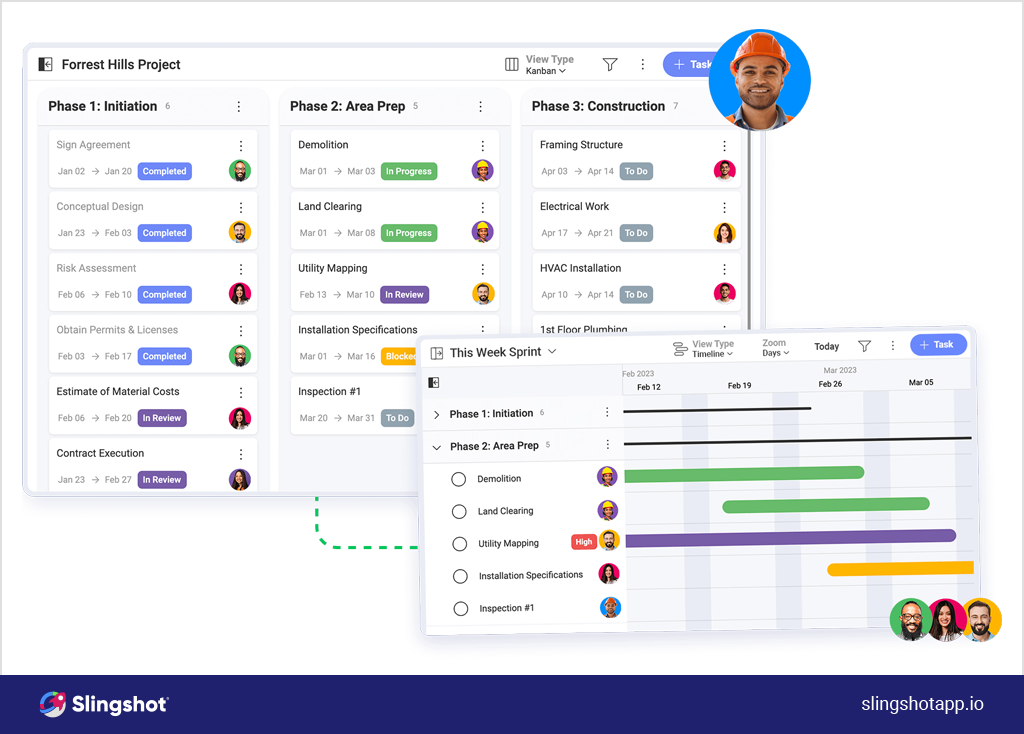Revolutionize Construction Projects With Powerful Monitoring Devices
The building and construction sector is at an essential point where the integration of effective management devices can significantly boost task outcomes. As we explore the various measurements of construction monitoring tools, one should take into consideration just how these technologies can shape the future of project distribution and what ramifications they hold for sector experts relocating onward.
Advantages of Management Devices

Additionally, management devices enable real-time monitoring of project progression, allowing for prompt identification of potential problems. This positive technique reduces delays and price overruns, producing an extra efficient operations. Enhanced data analytics abilities give useful understandings right into source appropriation and task performance, allowing educated tactical and decision-making planning.
In addition, the automation of routine jobs frees up job supervisors and team participants to concentrate on more essential tasks, hence maximizing personnels. The use of management tools likewise fosters accountability, as they provide clear paperwork of obligations and results, which can be referenced for future projects.
Trick Features to Consider
When choosing management tools for building jobs, it is vital to think about vital functions that line up with project demands and purposes. User-friendly interfaces are vital; devices need to be instinctive to minimize training time and improve individual adoption. Second of all, robust task scheduling capacities are critical, permitting efficient timeline monitoring and source allocation.
One more important function is real-time cooperation devices, which assist in interaction amongst team subcontractors, participants, and stakeholders, making certain every person is on the same web page. Additionally, combination capacities with existing software application systems for design, procurement, and bookkeeping can improve operations and enhance information circulation.
Mobile access is also essential, allowing project supervisors and area employees to gain access to information on-site, therefore boosting efficiency. Additionally, detailed coverage and analytics performances permit data-driven decision-making, aiding to determine concerns and maximize performance.
Lastly, solid protection measures to shield sensitive task information can not be neglected. By carefully examining these crucial attributes, building and construction experts can choose monitoring tools that considerably boost task execution and total success.
Popular Software Solutions
In the realm of building and construction task management, a range of software services have become leaders in the market, each offering one-of-a-kind capabilities customized to meet varied job requirements. Amongst these, Procore stands out for its extensive task management abilities, including cooperation, budgeting, and scheduling tools that streamline interaction amongst stakeholders. Autodesk Building and construction Cloud incorporates style and construction processes, allowing teams to handle projects perfectly from creation to completion.
One more noteworthy remedy is Buildertrend, which is particularly preferred amongst domestic contractors. It provides functions for organizing, task tracking, and client communication, guaranteeing that all celebrations stay notified throughout the job lifecycle. For those looking for robust accounting devices, Sage 300 Building And Construction and Property uses sophisticated monetary monitoring abilities, making it ideal for larger firms with complicated bookkeeping requirements.
Furthermore, CoConstruct is getting grip for its easy to use user interface and functionalities made particularly for personalized building contractors and remodelers. Each of these software program options not only boosts effectiveness yet additionally fosters collaboration, ultimately leading to more successful task outcomes. Construction Job Management Software. With the right software in position, building specialists can navigate obstacles better and drive tasks towards completion on time and within budget
Study of Success
Effective application of administration software in building tasks usually brings about exceptional results, as evidenced by different study across the industry. One noteworthy example is a large-scale infrastructure project in New York City, where the fostering of a thorough project management system led to a 30% reduction in job delays. By improving interaction Management Software For Contractors among stakeholders and offering real-time progression monitoring, the team was able to determine and minimize threats without delay.

Furthermore, a residential growth job in The golden state used sophisticated scheduling software program, which enabled for accurate timeline management and source preparation. The project completed two months in advance of schedule, enabling the firm to take on additional agreements quicker than expected. These case research studies exemplify exactly how effective monitoring tools can transform construction projects, driving performance, cost-effectiveness, and effective task delivery.
Future Trends in Building Monitoring
Technology is poised to redefine building administration, as arising technologies and approaches assure to improve efficiency and collaboration within the sector. One considerable fad is the raising adoption of Building Info Modeling (BIM), which helps with an electronic representation of useful and physical qualities of a task (Software For Construction Project Management). This innovation enables stakeholders to picture the job in its totality, causing improved decision-making and reduced mistakes

Sustainability is one more important pattern, with building firms significantly concentrating on eco-friendly practices and materials. Management Software For Contractors. This change not only satisfies regulative requirements but also interest an expanding eco-conscious market. As these trends remain to progress, building and construction management will certainly end up being a lot more effective, collective, and lasting, leading the way for a robust market future
Conclusion
In verdict, the assimilation of powerful management devices in building projects considerably boosts performance, performance, and interaction amongst stakeholders. As the sector continues to advance, the transformative effect of these devices will be important for effective task shipment and future innovations.
When picking management devices for building projects, it is imperative to take into consideration vital functions that line up with project needs and objectives.In the realm of building project management, a range of software application services have actually arised as leaders in the industry, each offering unique capabilities customized to meet diverse task requirements. It supplies attributes for organizing, project tracking, and customer interaction, making certain that all parties remain notified throughout the project lifecycle. One notable example is a massive infrastructure project in New York City, where the fostering of a thorough job monitoring platform resulted in a 30% reduction in project hold-ups. These situation studies exemplify how powerful monitoring devices can change construction tasks, driving effectiveness, cost-effectiveness, and successful job shipment.